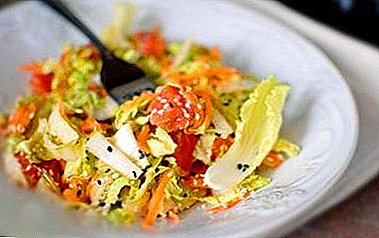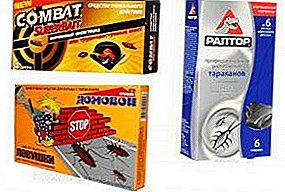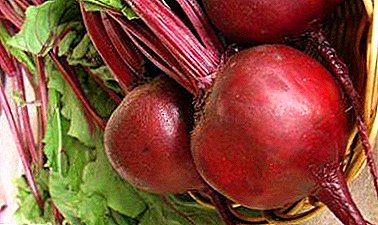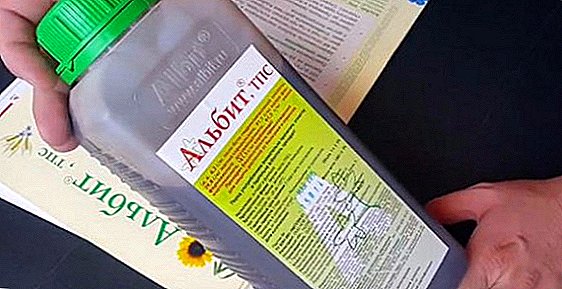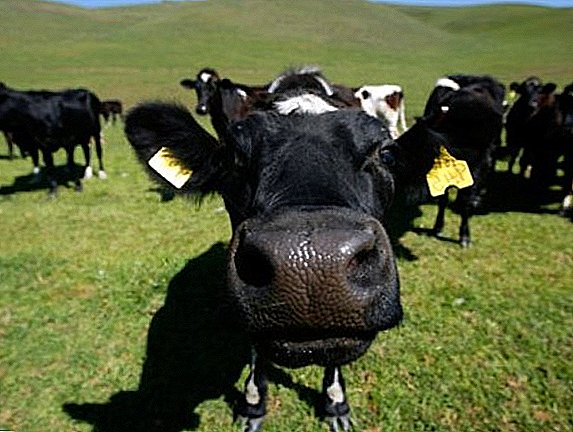 Animals, like people, need vitamins and microelements, and cattle is no exception. However, few people know that it is important not only to obtain these substances in necessary quantities, but also to properly combine them with each other, since some of them have the properties to enhance the effect of each other, while others, on the contrary, are mutually neutralized. In particular, selenium needed by cows can only be assimilated if there is enough vitamin E. It is for the balanced action of these two substances in animal husbandry that E-selenium is widely used.
Animals, like people, need vitamins and microelements, and cattle is no exception. However, few people know that it is important not only to obtain these substances in necessary quantities, but also to properly combine them with each other, since some of them have the properties to enhance the effect of each other, while others, on the contrary, are mutually neutralized. In particular, selenium needed by cows can only be assimilated if there is enough vitamin E. It is for the balanced action of these two substances in animal husbandry that E-selenium is widely used.
Composition, release form, packaging
E-selenium is a veterinary drug, the composition of which is clearly reflected in its name. The tool includes two active ingredients:
- tocopherol acetate (vitamin E) - 50 mg per 1 ml (tolerance + 10%);
- Sodium selenite (selenium) - 0.5 mg per 1 ml (tolerance + 10%).
The release form of E-selenium is liquid for injections. It can be colorless or pale yellow, transparent or opaque (opalescent, having a suspension of finely dispersed substances).

The manufacturer offers a lot of options for packaging the drug. It can be:
- dropper bottles of glass or polymer material of 5, 10, 15 and 20 ml;
- bottles of glass or polymer material of 20, 50 and 100 ml, hermetically sealed with rubber stoppers and rolled up with aluminum caps;
- polyethylene bottles or cans with screw caps of 0.5; 1.0; 2.0; 2.5 and 5.0 liters.
Important! The variety of packaging due to the fact that E-selenium has a very widespread use in veterinary medicine. The drug is suitable not only for cattle, but also for horses, smaller farm animals, poultry, fur animals, as well as dogs and cats.
Each bottle, dropper bottle or canister has obligatory marking, which should contain:
- manufacturer's name;
- its location;
- drug name;
- trademark;
- drug prescription;
- the composition of the drug (name of active substances);
- volume;
- mode of application;
- batch number;
- shelf life;
- caution "For veterinary use").
It will be useful for you to learn how to use the drug "Sinestrol" for the treatment of cattle.
In addition: each package in which the product is sold must be accompanied by detailed instructions for use.

Pharmacological properties
The main purpose of E-selenium is to compensate for the deficiency of selenium and tocopherol in the body of animals. To understand the pharmacological properties of the drug, one should remember the role that both of these substances play in the body.
Read more about the use of "E-selenium" in veterinary medicine.
Selenium is an element that is needed by humans and animals in very small doses, but its deficiency adversely affects the work of most organs and systems. The main function of selenium is to protect the body from free radicals (antioxidant properties), which is necessary to ensure the safety of cells and tissues.
In addition, selenium is an integral component of many hormones and enzymes, thus providing metabolic processes in the body. Finally, this element ensures the absorption of tocopherol.
In turn, tocopherol regulates carbohydrate-fat metabolism, strengthens the immune system, has additional antioxidant properties and promotes the absorption of vitamins A and D.
Did you know? Selenium, with all its beneficial properties, is one of the most dangerous poisons known to man. The lethal dose of this element per 1 kg of weight is: for a person - 2-4 mg, for a cow - 10-11 mg, for a horse - 3-4 mg, for a pig - 13-18 mg.
The main advantages of E-selenium in comparison with other vitamin and mineral supplements are:
- balanced composition;
- complex antioxidant action;
- very high efficiency at low dosages;
- a short list of contraindications;
- no restrictions on the use of milk after application.

What is used
The indication for the use of E-selenium is the prevention and treatment of pathological conditions and diseases arising on the background of selenium and / or vitamin E deficiency. These, in turn, include:
- delayed growth of calves or insufficient weight gain;
- intoxication of the animal body with mold and other mycotoxins, salts of nitric acid, as well as salts of heavy metals;
- weakening of the body after deworming or vaccination;
- infectious, including parasitic diseases;
- pregnancy pathology (fetal developmental disorder);
- impaired reproductive function in both calves and calves;
- hepatodystrophy (liver necrosis);
- traumatic myositis (muscle damage due to bruises, sprains, or tears);
- muscular dystrophy (white muscle disease) in calves;
- damage to the heart muscle (cardiopathy);
- experienced stress.
Did you know? Selenium is found in some plant foods that may be part of the feed for a cow. There is it in cereals (especially in corn), bran, legumes, cabbage, some herbs (for example, in oregano). However, the amount of selenium in such plantsx depends on the level of its content in the soil where they grew. In Russia, the soil is very poor in selenium; In addition, poor ecology contributes to the death of microorganisms living in the soil, processing selenium into forms accessible to plants, therefore even the amount of mineral present in the earth is not fully absorbed.
Dosage and administration
Injections of E-selenium to cows can be made intramuscularly or subcutaneously. In some cases, the drug is diluted with saline or distilled water before use to make the dose more convenient to use. In this case, before dialing into the syringe, the liquid should be very well mixed.

The specific dosage depends on the area and the characteristics of the diet of the animal.
In Russia, Ukraine, Belarus and other post-Soviet countries, it is necessary to compensate for the deficiency of selenium in the body of farm animals at the expense of special preparations, such as E-selenium.
Important! Exceeding these dosages by more than one and a half times can be dangerous to the health and life of the animal. A single dose of the drug per cow in any case should not exceed 15 ml, which corresponds to 7.5 mg of selenium.
For regions located near the sea, this problem may not be so acute, but for other territories it is necessary to focus on the following recommended dosages:
| Cow age | Prevention | Treatment | |||
| Single dose of the drug per 1 kg of weight | The interval between drug administration | Single dose of the drug per 1 kg of weight | Number of injections | The interval between drug administration | |
| Calves up to 3 months | - | - | 0.05 ml | 6 | 14 days |
| Calves from 3 to 14 months | 0.02 ml | 30 days | 0.1 ml | 3 | 7 days |
| Adult cows | 0.02 ml | 2-4 months | 0.1 ml | 2-3 | 7-10 days |
| Cows 60 days before calving | 0.02 ml (15 ml per animal) | - | 0.02 ml | 3-4 | 10-14 days |
If, for medical purposes, the use of E-selenium was missed for any reason, the next injection is given, after which the treatment continues with the established intervals between injections. It is not necessary to replenish the missed injection by increasing a single dose or reducing the intervals between injections. Particular caution should be exercised in the treatment of E-selenium young, as well as pregnant and lactating heifers.
It will be helpful to know how many days the cow lasts.
In order to avoid poisoning with selenium, cow meat can be eaten no earlier than 30 days after the last injection of the drug. If a cow was slaughtered earlier than the specified period, its carcass can be used as feed for other animals or for processing into meat and bone meal. There are no restrictions on the use of milk from cows receiving E-selenium injections.

The drug is usually easily tolerated by animals and does not cause any complications or side effects. Problems can arise only when the recommended doses are exceeded or the simultaneous use of other drugs or feed containing selenium.
The following signs indicate an excess of selenium in the body of a cow:
- decrease in body temperature;
- characteristic garlic smell of skin and respiration;
- abdominal pain (gnashing of teeth);
- weight loss;
- increased sweating;
- lack of coordination of movements;
- frequent shallow breathing;
- increased salivation;
- bluish coloration of mucous membranes and, in some cases, of the skin;
- cardiopalmus;
- decrease (hypotension) or complete cessation (atony) of the motor function of the scar.
Did you know? Selenium, as a very important element for the body, is a frequent component of various dietary supplements. But once an American company specializing in the release of such funds, mistakenly increased the recommended dose of an element a thousand times, mixing up milligrams with micrograms. The result of this oversight was a series of serious poisonings and the intensification of ardent opponents of dietary supplements.
When using E-selenium, it is also necessary to keep in mind that it should not be combined with other vitamin supplements, since this can lead not only to an overdose, but also to a decrease in the pharmacological effect. For example, ascorbic acid prevents the absorption of tocopherol and selenium.

It is necessary to work with him in gloves, not allowing the liquid from the bottle to hit the skin and mucous membranes. If this happens, the affected area should be well washed (rinsed) with plenty of water. If the product gets into the stomach, you should immediately consult a doctor, having the instructions for the preparation with you. At the end of the work gloves should be disposed of, and hands wash with warm water and soap. Eating and smoking in the process of working with E-selenium is unacceptable.
Shelf life and storage conditions
The drug can be used within 24 months from the date of manufacture indicated on the package, but only if it is stored in a sealed bottle from the manufacturer. After opening the contents of the vial should be used within 14 days.
It is strictly forbidden to use E-selenium after the expiration date.. You can not also use the drug was stored in violation of the recommendations of the manufacturer.
Important! E-selenium belongs to the category of drugs, the purpose of which dosing and storage should be made with the utmost care due to possible negative consequences and complications in violation of the medical recommendations for handling them. Previously, these drugs were included in the so-called List B, approved by the Ministry of Health of the Russian Federation. In 2010, List B was canceled, but this does not mean that precautions when storing the medicines included in it can be ignored.
The drug should be stored in a dark place at a temperature range from 4 ° C to 25 ° C separately from other drugs, food and feed. The place of storage of medicines should not be accessible to children.
After the expiration of the drug, both opened and unopened vials must be disposed of in accordance with the applicable sanitary regulations. In the same way, empty bottles should be destroyed from under the medication (they cannot be used as containers for household and especially food purposes).
Find out also what drugs and antibiotics are used for cows.
Summing up, it should be emphasized once again how important it is to monitor the observance of the balance of selenium and vitamin E in the body of a cow. These components, mutually complementing and strengthening each other, participate in the work of practically all the organs and tissues of the animal, ensuring its rapid growth and maximum productivity. However, it should also not be forgotten that selenium is the strongest poison, therefore its overdose is no less dangerous than deficiency. Strictly follow the instructions for use of the drug E-selenium, and your animals will feel great.



